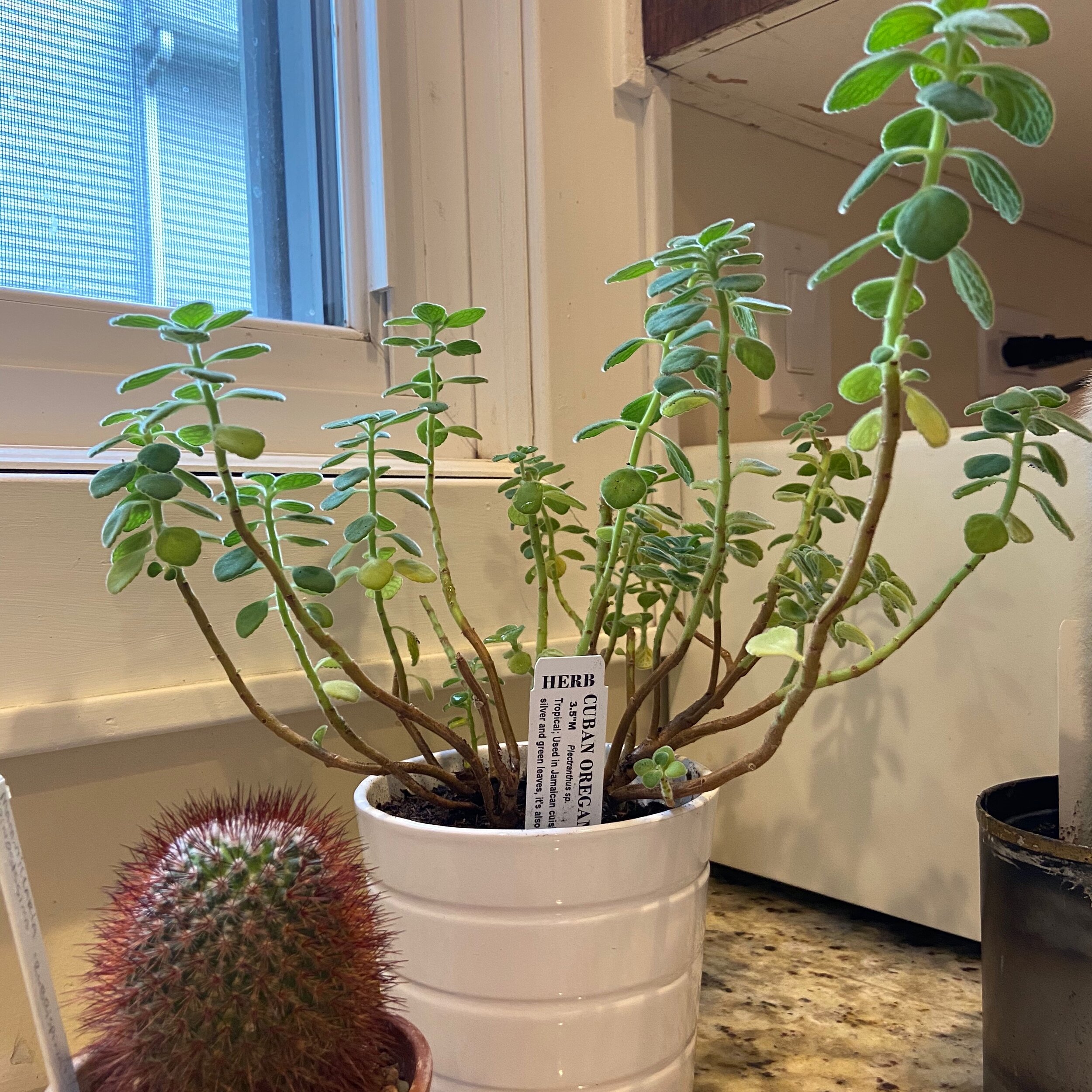TIL: My Cuban Oregano Learning Journey
The mother plant
A year or so ago I bought a lovely little plant known as Cuban oregano, or Plectranthus amboinicus. It grew and grew(!) in its tiny pot — with no room for healthy expansion. I started to notice the lower leaves turning yellow and then brown and then falling off. My previously darling plant was now ungainly with balding lower branches! I assumed it would go to the big garden in the sky (like several plants before it 🤷♀️), but it kept on growing and getting more awkward looking.
I googled “Cuban oregano” for some insight. The first video result was How to Propagate Cuban Oregano (with actual results). “What? You can propagate oregano?” I wondered aloud to Wilma, my dachshund companion. This would allow me to essentially start over and learn how to grow this plant properly.
The video explained that Cuban oregano is not actually oregano but…a succulent! It smells and tastes like oregano. It can even be used culinarily. And because it’s a succulent, it’s particularly easy to propagate — just cut off a branch and stick it in the soil. Totally doable. And so, because I couldn’t do just one simple experiment, I cut 8 stems from the mother Cuban oregano and planted 8 babies.
The babies
Not all the stems I chose were ideal candidates. Some were too long and will have to be split up and replanted. But they all grew roots, and their new leaves are much bigger and more healthy than the mother’s ever were. This has prompted me to do more propagation research because I also have a ZZ plant that’s threatening to take over my living room. I’ll need to separate the ZZ’s rhizomes and make new plants with them. This is described as a simple process but we’ll see — my guy is out of control.
TIL Takeaways
This series is about lessons from “real-life” learning that we can apply to learning we design. Here are three takeaways:
Our learners just need a nudge. When launching a new training program, consider a comms approach that presents common symptoms to the audience so they can self-diagnose and opt in to the training. Work with your subject matter experts and talk to your audience to find out what those symptoms of the underlying problem might be.
Tangible results will prompt more development. Perhaps like us you dream of a world where training is not required but rather is sought out and taken voluntarily. If our programs are designed to produce small but tangible improvements that our learners recognize and benefit from, we gain credibility with our audience and they’re more likely to explore our other offerings.
Low-stakes practice is essential to performance improvement. Our learners will need ample time and opportunity to develop their new skills. They will make mistakes after even the most thorough training — it takes time to get good at something. We should provide resources for more information and forums for asking questions. To create a true culture of learning, we need to do everything we can to promote continued curiosity and additional discovery over time.
— Julie Dozier


